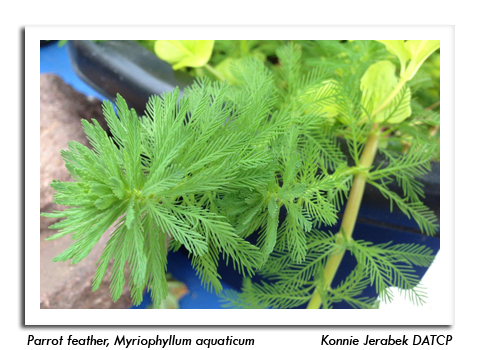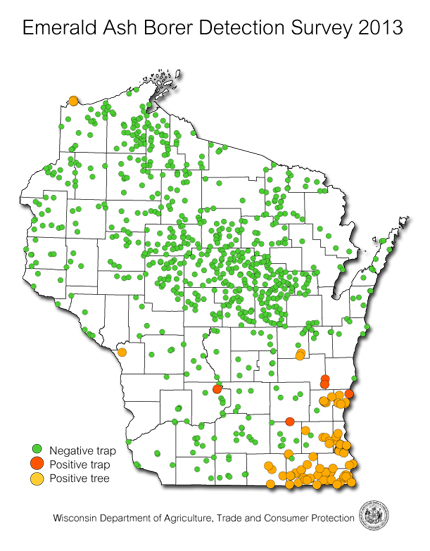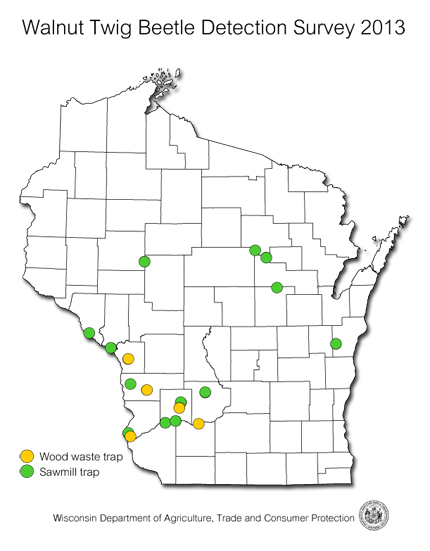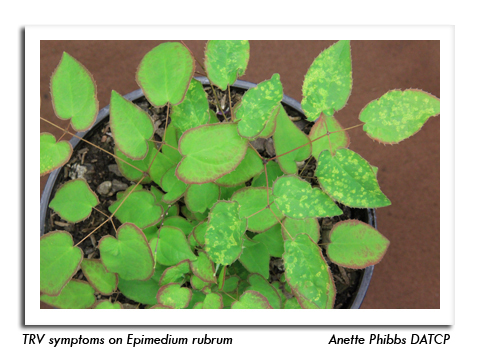
 |
|
|
Nursery & Forest
Volume 58 Number 18 Date 11/21/2013 JAPANESE BEETLE - Counts in Wisconsin nurseries declined for the second straight year. The annual trapping survey yielded an average of 95 beetles per trap, a 42% decrease from 165 per trap in 2012 and a 60% decline from 238 in 2011. High average counts of 200 or more beetles per trap were registered in Jefferson and Manitowoc counties, moderate counts of 50-199 per trap were found in Eau Claire, Dodge, Jackson, Ozaukee and Washington counties, and 24 other counties averaged fewer than 50 per trap. One possible reason for the decreased beetle catch is that dry soils during the summer drought of 2012 negatively impacted egg and larvae survival. REJECTED NURSERY STOCK - By state regulation, ornamental plants and trees infested with regulated pests or that fail to meet pest cleanliness, labeling, or grade and quality standards cannot be offered for sale in Wisconsin. Among the nursery stock found to be in violation of these regulations in 2013 were numerous herbaceous perennials with viruses, pear trees with fireblight, phlox 'Fireworks' with stem and bulb nematode, redbud and catalpa trees with verticillium wilt, assorted non-viable stock, and various trees and shrubs with scale insect infestation and wood-boring insect damage. Many plants also lacked proper labels, which must include the botanical name and USDA hardiness zone. Nursery inspectors required proper labeling before sale was allowed. Also rejected again this year were plants listed in the NR 40 Invasive Species Rule, such as blue lyme grass, curly-leaf pondweed, red stemmed parrot feather, Tartarian honeysuckle, yellow floating heart and variegated porcelain berry vine. Violations of the NR 40 rule were documented by inspectors at 19 locations in 2013. STEM AND BULB NEMATODE - The DATCP Plant Industry Laboratory, UW-Madison and USDA ARS Nematologists confirmed in 2013 the first detection of the stem and bulb nematode, Ditylenchus dipsaci, in Wisconsin. Ditylenchus dipsaci is a recognized pest of a wide range of root crops, ornamental and nursery plants, and some field crops, and is considered one of the most destructive plant parasitic nematodes in temperate regions of the world. As mentioned, the nematode was discovered in phlox 'Fireworks' in a Jefferson County greenhouse. Both the greenhouse and its out-of-state supplier voluntarily removed from sale and destroyed all implicated phlox plants. There is no evidence to suggest that the nematode has become established in Wisconsin as a result of this detection. -- Liz Meils, DATCP Nursery Inspector CHRISTMAS TREE ROOT ROTS - As of November 1, thirty-eight diseased Christmas trees have been received by the Plant Industry Laboratory for diagnosis. Nine samples from fields in Eau Claire, Lincoln and Marathon counties have tested positive for four distinct Phytophthora species: Phytophthora cactorum, P. europaea, P. plurivola and P. sansomeana. Other diseases associated with Christmas tree mortality this year were armillaria root rot, cytospora canker, phomopsis stem canker and sclerophoma tip blight. VIRUS SURVEY OF ORNAMENTALS - A survey for viruses of ornamentals was conducted at 59 Wisconsin greenhouse, nursery and retailer locations in 2013. Two hundred and eleven plants exhibiting virus symptoms were collected and diagnosed at the DATCP Plant Industry Laboratory. Several samples were tested for as many as nine viruses, depending upon the host. Of the 211 plants tested, 127 (60%) were infected with at least one virus. The most frequently detected virus was tobacco rattle virus (TRV), found in 68 of 170 plant samples (40%) belonging to 17 separate host genera. Epimedium (100% of samples positive for TRV), dicentra (95% positive), paeonia (47% positive), delphinium (44% positive), and phlox (40% positive) were the genera most often infected with TRV. Several other viruses were also detected. Hosta virus X was diagnosed in 11 of 32 samples (34%), and a variety of potyviruses were found in 15 of 82 samples (18%), including canna (canna yellow streak virus), lily (lily mottle virus), lobelia (turnip mosaic virus), and a few unknown potyviruses detected in iris, phlox and sedum. Another 10 of 152 samples (7%) tested positive for cucumber mosaic virus, five of 34 samples (15%) were positive for alfalfa mosaic virus, and impatiens necrotic virus was found in six of 159 host plants (34%). Arabis mosaic virus, tobacco mosaic virus and tomato spotted wilt virus were found in only two or three plants. -- Anette Phibbs, DATCP Plant Pathologist EMERALD ASH BORER - The 2013 Wisconsin EAB detection survey included 693 traps and resulted in the capture of beetles on one DATCP trap in Dodge County and on four DNR traps at state parks in Fond du Lac, Ozaukee and Sauk counties. Through the vigilance of private and municipal arborists, state forest health specialists and several educated homeowners, infested trees were found in two new counties, Douglas and Winnebago, and in several southeastern counties in which EAB was already known to occur. The Douglas County detection was more than 200 miles north of any previous known infestation. Consequently, Dodge, Douglas, Sauk and Winnebago counties were added to the existing quarantine. Fond du Lac and Ozaukee counties have been quarantined since 2008. Emerald ash borer has now been found in 18 Wisconsin counties: Brown, Crawford, Dodge, Douglas, Fond du Lac, Kenosha, La Crosse, Milwaukee, Ozaukee, Racine, Rock, Sauk, Trempealeau, Vernon, Walworth, Washington, Waukesha and Winnebago. Jefferson and Sheboygan counties have also been quarantined due to their proximity to known infestations. WALNUT TWIG BEETLE - A trapping survey for this vector of the thousand cankers disease fungus, Geosmithia morbida, was conducted for the second year. The survey consisted of 36 pheromone traps deployed at five municipal wood waste drop-off sites and 13 sawmills in Buffalo, Chippewa, Crawford, Grant, La Crosse, Langlade, Manitowoc, Richland, Sauk, Shawano, Trempealeau, Vernon and Waupaca counties. No beetles have been detected so far, although sample processing is not yet complete. Thousand cankers disease is a newly recognized disease (2008) that has caused widespread death of black walnuts in at least five eastern states (North Carolina, Ohio, Pennsylvania, Tennessee, and Virginia) and nine western states (Arizona, California, Colorado, Idaho, New Mexico, Nevada, Oregon, Utah, and Washington) during the past decade. It has not been found in Wisconsin to date. -- Renee Pinski, DATCP Forest Entomologist GYPSY MOTH - Analysis of trapping program data revealed a doubling of moth counts from 2012 to 2013. The annual survey registered an average of 19 moths per trap compared to 9.5 last year. State counts were 353,134 moths in 18,513 traps in 2013 and 173,588 moths in 18,293 traps in 2012. As was the case in 2012, the highest numbers were reported from Ashland, Bayfield and Jackson counties while average counts in the southern third of the state declined. The increase in moth capture in the northern part of the state is conjectured to be the result of weather conditions that increased female moth mortality, slowed larval development and extended the male moth flight period. Once again this year, none of the 52 counties trapped recorded zero moths. -- Rick Hummell, DATCP Public Information Officer with the Gypsy Moth Program 





|
|
|